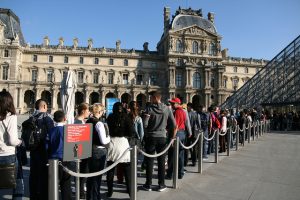I had big plans for winter break, which I was spending at home, in the Big Apple. Thoughts of enjoying the sights on Fifth Avenue, taking in a couple of recently released movies, visiting a number of highly publicized exhibitions and filling my belly at celebrated restaurants danced like sugarplums in my head.

It was not to be. Everywhere I turned, there was someone else ahead of me, or, more to the point, multiple someone elses. The movies I had wanted to see were sold out; the exhibitions I looked forward to relishing were so dense, so crowded, with visitors you couldn’t get close enough to the paintings or the display cases to make out what all the fuss was about and the city’s major thoroughfares, subways and buses were so thronged you could barely move. As for securing a restaurant reservation, never mind.
The surge in population was enough to dent my holiday spirits, rendering me grumpy and out-of- sorts. But then I read Wesley Morris’s marvelous salute to the National Museum of African American History and Culture and with it, his paean to waiting on line and, presto, I had a change of heart: Bring on the crowds!
“Standing around is simultaneously boring and one of the happiest, most poignant things I’ve ever done with monotony,” Morris writes, linking stasis to the power of anticipation. Much of what he describes has to do with the particularities of African-American history, noting that “building waiting into the experience feels right for a place that tells the story of a people who’ve had to wait for everything else.”
You could also apply Morris’s insight about the resonance of anticipation to other, less fraught, circumstances in which that emotion reigns supreme: the start of a new academic term, say, or the release of a new book.
Both await. This term, I’ll be teaching two seminars. One is an undergrad history course that explores the impact of crisis and controversy on American Jewry’s sense of itself. The other, a graduate course called “Multiple Lives,” explores the life-cycle of celebrated Jewish cultural phenomena that range from the dybbuk and the golem to Fiddler on the Roof and the Borscht Belt.
Also in the wings is my brand new book. Titled Set in Stone: America’s Embrace of the Ten Commandments, it explores the ways in which the ancient biblical text imprinted itself on the modern American imagination. You’ll be hearing more about the book in the weeks preceding its release, which is scheduled for the very first of May.
In the meantime, anticipation is in the air.

